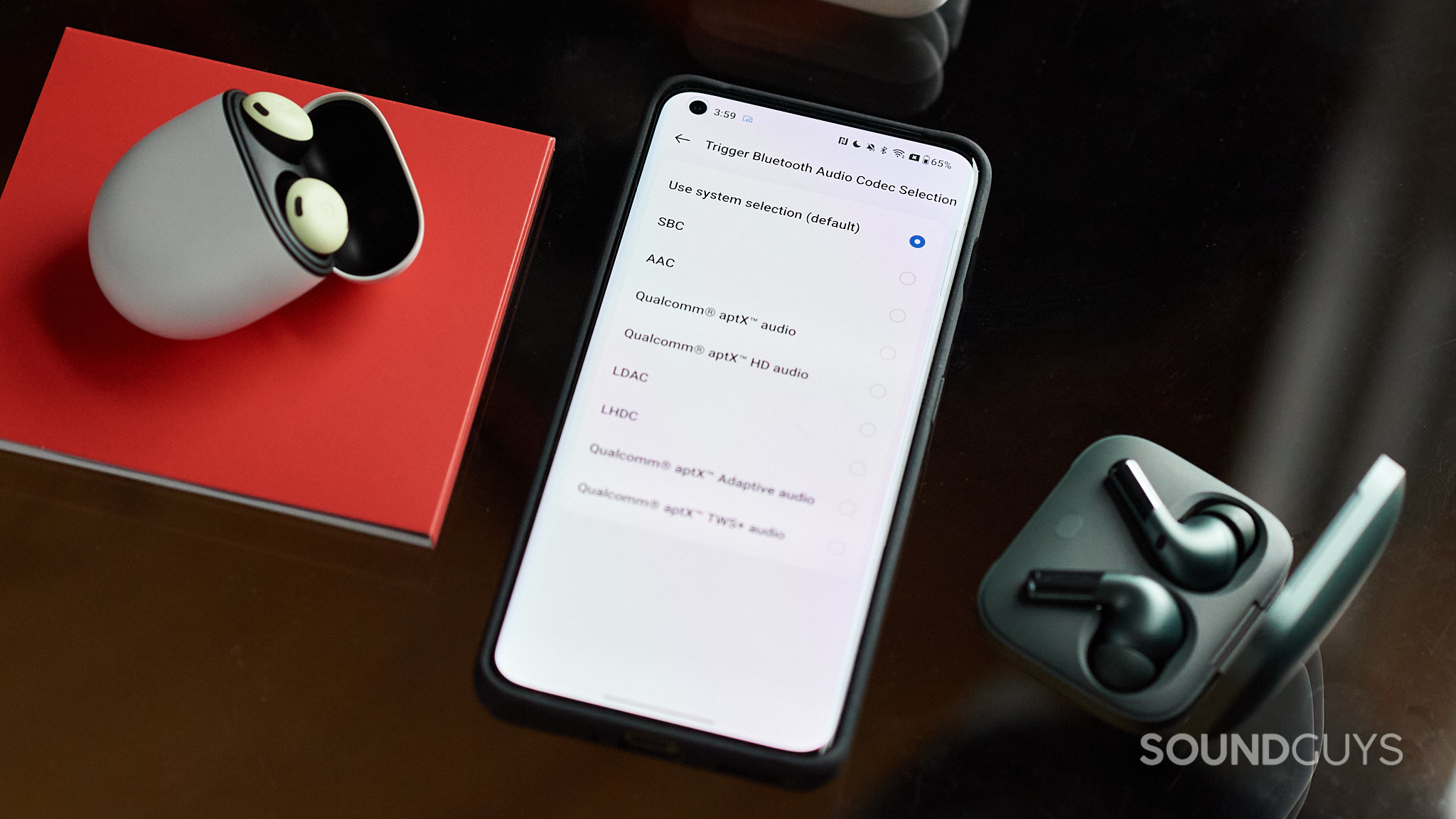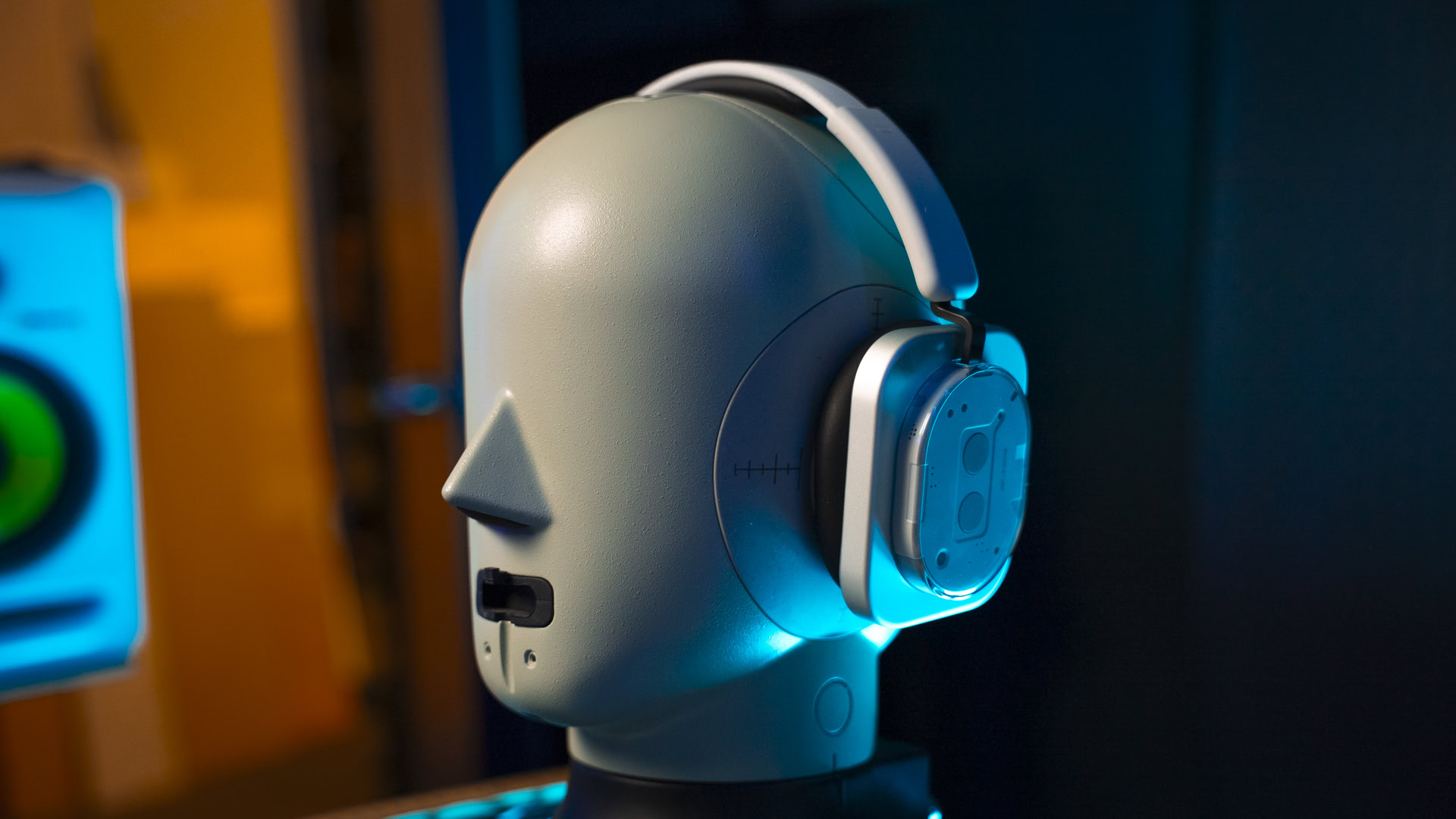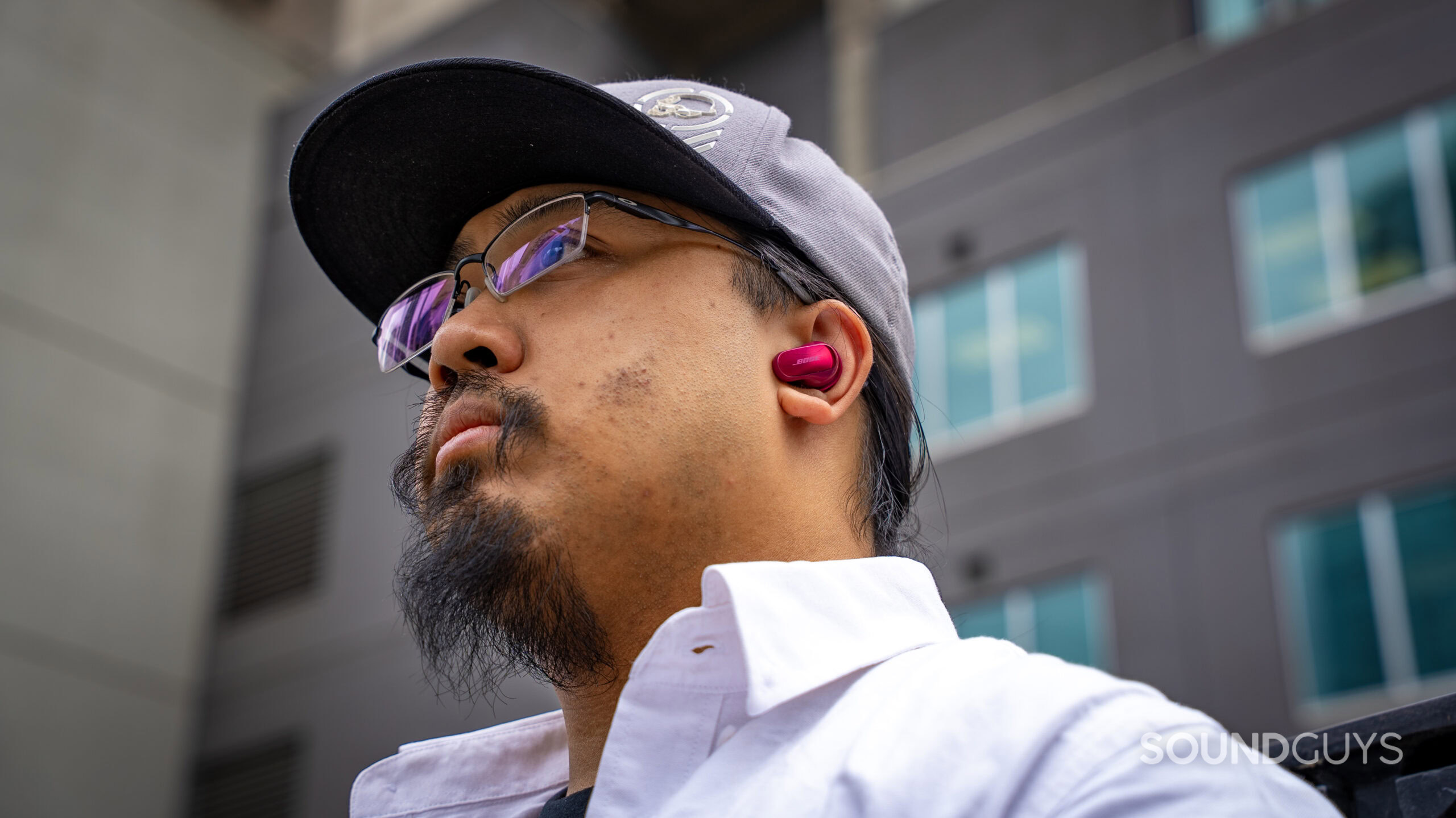All products featured are independently chosen by us. However, SoundGuys may receive a commission on orders placed through its retail links. See our ethics statement.
Best LDAC headphones and earbuds
November 6, 2025
In the world of Bluetooth audio, not all codecs are created equal. The default SBC works everywhere, but it doesn’t offer the audio quality of more specialized formats, like aptX for Android or AAC if you’re using an iPhone. Then there’s LDAC—Sony’s high-bitrate codec that’s become the go-to for audiophile-focused wireless headphones.
While Sony markets LDAC as a Hi-Res codec, the reality is more nuanced: at its highest 990kbps bitrate, it comes closer to CD quality than true 24-bit/96kHz Hi-Res audio, and most phones default to the 660kbps mode anyway. Still, when conditions are right, LDAC offers noticeably better audio quality than standard Bluetooth codecs—you just need the right headphones and an Android device to take advantage of it (sorry, iPhone users). Because Sony developed the codec, you’ll find the best LDAC support in their own products, but several other manufacturers have embraced it too.
- November 6, 2025: We revised the entire article format and updated the top picks to include headphones and earbuds.
The Quick Answer
For a quick guide to the best LDAC headphons and earbuds that suit your needs and budget, check out our top picks below. Each has a link to our full review.
The best headphones overall: Sony WH-1000XM6
The best budget headphones: Edifier W830NB
The best earbuds overall: Nothing Ear (3)
The best budget earbuds: Anker Soundcore Liberty 4 NC
Best LDAC headphones overall: Sony WH-1000XM6


The Sony WH-1000XM6 represents the culmination of years of refinement in Sony’s flagship ANC headphone line. With excellent active noise cancelation that reduces outside noise by an average of 87%, these headphones excel in the environments they’re designed for—commutes, flights, and noisy offices. The Q3 chip processes signals quickly to adapt to changing noise environments on the fly, while the strong physical isolation from the ear cups makes the ANC system’s job easier. Sony also addressed long-standing complaints from previous models: the fragile hinge is gone, replaced with a more robust folding design, and the power button is now easier to distinguish by touch.
Sound quality is where the WH-1000XM6 truly shines as the best-sounding headphones in Sony’s WH-1000X series to date. The 30mm drivers deliver a slightly warm tuning with elevated bass that most listeners will appreciate, without being overwhelming. The frequency response extends well into the highs, creating an impression of detail and clarity that works across genres. What’s more, the stock tuning is consumer-friendly enough that you won’t need to dive deep into equalization—though the Sony Sound Connect app offers a full 10-band EQ, Find Your EQ personalization test, and Sony 360 Reality Audio support if you want more control.
Battery life is another standout feature, with the WH-1000XM6 lasting over 37 hours in testing—easily enough for a full work week or intercontinental flight. LDAC support means Android users can take advantage of higher-quality Bluetooth audio (though you’ll want to manually set it to 660kbps for the best balance of quality and stability). The six-microphone beamforming array handles phone calls exceptionally well, using AI-trained voice extraction to cut through background noise. At $449.99, these are premium headphones with a premium price tag, but they deliver on nearly every front that matters.
Read our full Sony WH-1000XM6 review
Best budget LDAC headphones: Edifier W830NB

At under $80, the Edifier W830NB delivers an impressive feature set that exceeds its price point. Most notably, these budget headphones support the LDAC codec for higher-quality Bluetooth audio on Android devices—a feature typically reserved for much more expensive models. You also get audio over USB-C, which means you can use these wired while still enjoying ANC or transparency mode, and they’ll charge simultaneously. The inclusion of Bluetooth 5.4 and multipoint connectivity rounds out a surprisingly robust connectivity package for this price range.
The sound quality is treble-leaning but consumer-friendly, earning a respectable 4.4 overall MDAQS score that suggests most listeners will enjoy the stock tuning. What really sets the W830NB apart is the Edifier ConneX app, which offers a four-band parametric EQ with Q control—allowing you to cut or boost specific frequencies with precision. This level of EQ customization is rare, even on headphones costing several times more. Whether you prefer the Heavy Bass preset or want to tame the elevated high frequencies, you have the tools to personalize these headphones to your exact preferences.
The active noise cancelation won’t compete with flagship models. Still, it does a respectable job reducing low-end rumble on buses and trains—perfectly adequate for daily commutes and office use. Combined with good passive isolation from the plush, comfortable ear cups, these headphones block out enough noise to let you focus on your music. Battery life is exceptional, with Edifier claiming up to 54 hours with ANC on. The main compromises? There’s no carrying case included, no IP rating, and the plastic build scratches easily. But for listeners prioritizing features and sound quality over premium materials, the W830NB represents outstanding value.
Read our full Edifier W830NB review
Best LDAC earbuds overall: Nothing Ear (3)


The Nothing Ear (3) represents a compelling package for listeners who want flagship-level features without the flagship price tag. At $179, these earbuds undercut competitors like the AirPods Pro 2, Bose QuietComfort Ultra Earbuds, and Sony WF-1000XM5 while still delivering where it matters most. LDAC support means Android users can stream higher-quality audio up to 990kbps, and the strong ANC performance reduces outside noise by around 82%—placing these among the best noise canceling earbuds on the market. The 12mm dynamic drivers deliver impressive clarity with minimal distortion, earning a 4.7 overall MDAQS score that suggests most listeners will enjoy the sound straight out of the box.
What truly sets the Nothing Ear (3) apart is the exceptional Nothing X app, which offers one of the best EQ implementations in wireless audio. Beyond the simple 3-band EQ for casual users, there’s a full parametric equalizer with adjustable Q values that lets audio enthusiasts dial in precise frequency adjustments. The Personal Sound hearing test creates a custom profile based on your hearing sensitivity, and you can even share custom EQ profiles via QR codes. This level of customization means the bass-heavy V-shaped tuning—which may not suit everyone initially—can be perfectly tailored to your preferences. Combined with features like dual-device connection, low-latency gaming mode, and Bluetooth 5.4 with Auracast support, the app experience is genuinely best-in-class.
Comfort is another highlight, with the revised stem angle helping the earbuds sit more securely than previous Nothing models. The IP54 rating provides adequate protection against dust, sweat, and light rain, while the premium aluminum charging case (with recycled metal accents) feels more durable than the plastic competition. Battery life clocks in at around 5 hours with ANC on, extending to 22 hours with the case—perfectly reasonable for daily use. The signature transparent design now features custom metal accents that make these stand out visually while maintaining the lightweight, fatigue-free fit that works for extended listening sessions.
Read our full Nothing Ear (3) review
Best budget LDAC earbuds: Anker Soundcore Liberty 4 NC


The Anker Soundcore Liberty 4 NC proves you don’t need to spend hundreds to get genuinely impressive wireless earbuds. At $99.99 (and often discounted during sales events like Prime Day and Black Friday), these earbuds deliver features that rival much more expensive competitors. LDAC codec support means Android users can stream higher-quality audio, while the active noise cancelation is remarkably effective for the price—successfully attenuating traffic noise and public transit hum with multiple intensity levels to choose from. The battery life is exceptional, lasting nearly 10 hours with ANC enabled on a single charge, with the case providing approximately 50 hours total. Fast charging gives you 4 hours of playback from just 10 minutes of charging, and the case supports both USB-C and wireless Qi charging.
Where the Liberty 4 NC truly excels is the comprehensive Soundcore app, which offers customization options typically reserved for flagship models. You get Adaptive Noise Canceling that automatically adjusts based on your environment, five manual ANC intensity levels, dedicated wind reduction mode, and even transportation-specific ANC settings. The app includes 22 EQ presets plus an eight-band equalizer for precise tuning, a fit test to optimize your ear tip selection, and extensive control customization. This level of granular control lets you tailor these earbuds exactly to your preferences.
Sound quality earned an impressive 4.9 overall MDAQS score, among the highest of any wireless earbuds tested. The default tuning emphasizes bass and treble in a consumer-friendly V-shape that works well for pop and dance music, though the extensive EQ options mean you can easily adjust to your taste. The IPX4 rating provides adequate sweat and splash resistance, making these suitable for casual workouts. While the chunky case won’t disappear into tight pockets and comfort is merely average rather than exceptional, these are minor compromises for earbuds that deliver flagship features at a fraction of the cost.
Read our full Anker Soundcore Liberty 4 NC review
What you should know about LDAC headphones and earbuds

LDAC is Sony’s proprietary high-bitrate Bluetooth codec that operates at three different speeds: 990kbps, 660kbps, and 330kbps. While Sony markets LDAC as a Hi-Res audio codec, the reality is more nuanced. At 990kbps, LDAC comes closer to CD quality than true 24-bit/96kHz Hi-Res audio, particularly when it comes to noise floor and resolution above 15kHz. Most Android phones default to 660kbps in “Best Effort” mode rather than the maximum 990kbps setting, as the higher bitrates require very strong Bluetooth connections and are prone to stuttering in less-than-ideal environments.
The 990kbps and 660kbps settings deliver audio quality that’s roughly comparable to CD quality and noticeably better than standard SBC or AAC codecs. However, LDAC’s 330kbps fallback mode is actually worse than both aptX and regular SBC in terms of frequency response and noise floor. If you want to ensure you’re getting the best quality, you’ll need to manually force 990kbps or 660kbps in your Android phone’s developer settings, though 660kbps typically offers the best balance of quality and connection stability.
It’s important to note that LDAC is only available natively on Android devices (mandatory since Android 8.0) and is not supported on Apple products. iPhone users are limited to AAC and SBC codecs regardless of whether their headphones support LDAC, unless they use a compatible dongle. Additionally, you cannot use LDAC with Bluetooth multipoint—if you want to connect to two devices simultaneously, you’ll need to accept a lower-bitrate codec like AAC or SBC.
How we test LDAC headphones and earbuds

At SoundGuys, we put every pair of LDAC headphones and earbuds through our rigorous, standardized testing process to ensure consistent and objective results. Our testing begins with frequency response measurements in our acoustics lab, where we use industry-standard equipment to measure how accurately headphones reproduce audio across the entire frequency spectrum. We compare these results against our research-backed headphone preference curve to evaluate sound quality objectively.
For LDAC-specific testing, we verify codec performance on multiple Android devices, test connection stability at different bitrates, and evaluate audio quality differences between LDAC, AAC, and SBC codecs. We also assess whether phones default to 990kbps, 660kbps, or 330kbps in Best Effort mode, as this significantly impacts real-world performance.
Beyond objective measurements, our reviewers spend extensive hands-on time with each product, evaluating comfort during extended wear, build quality, control responsiveness, and app functionality. You can learn more about our comprehensive testing methodology on our How We Test page and read about Why We Test the way we do.
How we choose the best LDAC headphones and earbuds
Our selection process combines objective test data with real-world usability to identify LDAC headphones and earbuds that deliver genuine value. We prioritize products that not only support LDAC but also implement it well, meaning they maintain stable connections at higher bitrates and offer manual codec selection when needed. Products that default to 330kbps LDAC are evaluated critically, as this setting performs worse than standard Bluetooth codecs.
We consider the complete package: sound quality (measured and subjective), ANC performance, battery life, comfort, build quality, app features, and price-to-performance ratio. A product doesn’t need to excel in every category to make our list, but it must offer a compelling balance of features for its price point. Budget picks are held to different standards than flagship models—we evaluate whether they deliver exceptional value rather than absolute performance.
Why you should trust SoundGuys

SoundGuys maintains strict editorial independence in all our reviews and recommendations. While manufacturers sometimes provide review units, this does not influence our testing methodology, measurements, or conclusions. Our reviewers have no financial stake in recommending specific products, and we’re equally willing to criticize expensive flagships and praise budget alternatives based solely on performance.
Our testing facility uses calibrated, industry-standard measurement equipment, and our methodology is transparent and consistent across all reviews. We publish both objective data and subjective impressions, clearly distinguishing between measurable facts and reviewer opinions. When products fail to live up to marketing claims—as we found with LDAC’s Hi-Res audio promises—we report that honestly, even when it contradicts manufacturer messaging.
We regularly update our content as markets change, new products launch, and firmware updates alter performance. Our team includes audio engineers, experienced reviewers, and journalists who understand both the technical aspects of audio equipment and what matters to real users in everyday situations. You can read more about our editorial standards and review process on our ethics page.
Thank you for being part of our community. Read our Comment Policy before posting.